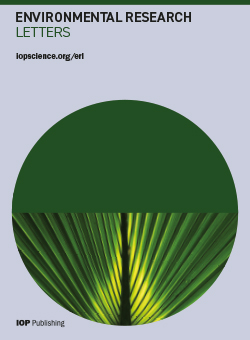检测气候稳定道路上的气候里程碑
IF 5.6
2区 环境科学与生态学
Q1 ENVIRONMENTAL SCIENCES
引用次数: 0
摘要
人类活动引起的气候变化时代可以用确定的气候里程碑来描述。这些里程碑标志着历史变化轨迹的改变,包括温室气体排放峰值、温室气体浓度峰值、变暖减速、净零排放以及向全球变冷过渡。然而,考虑到地球系统的内部变异性和测量的不确定性,要明确地说某一里程碑已经过去需要严谨的态度。本文利用 CMIP6 对峰值和衰退情景的模拟,研究了稳健地检测三个气候里程碑所需的时间:(1)全球变暖减缓;(2)全球地表温度上升结束;(3)二氧化碳浓度达到峰值。据估计,在模拟的变暖速度减缓之后,需要 40 到 60 年的时间才能在全球平均气温记录中稳健地检测到信号(95% 的变化)。检测气候变暖何时停止也很困难,要到 22 世纪中叶才能有足够的数据得出气候变暖已经停止的结论。检测二氧化碳浓度是否已达到峰值则要容易得多,二氧化碳浓度下降 3ppm 符合 99% 以上的可能性,即在所有研究方案中,二氧化碳浓度都已达到峰值。因此,随着二氧化碳排放速度的降低和净零排放的临近,解释全球温度记录将变得十分困难--极有可能给政策制定者和公众造成困惑。本文章由计算机程序翻译,如有差异,请以英文原文为准。
Detecting climate milestones on the path to climate stabilization
The era of anthropogenic climate change can be described by defined climate milestones. These milestones mark changes in the historic trajectory of change, and include peak greenhouse gas emissions, peak greenhouse gas concentration, deceleration of warming, net-zero emissions, and a transition to global cooling. However, given internal variability in the Earth system and measurement uncertainty, definitively saying that a milestone has passed requires rigour. Here CMIP6 simulations of peak-and-decline scenarios are used to examine the time needed to robustly detect three climate milestones: (1) the slowdown of global warming; (2) the end of global surface temperature increase; and (3) peak concentration of CO2. It is estimated that it will take 40 to 60 years after a simulated slowdown in warming rate, to robustly detect (
> 95 % change) the signal in the global average temperature record. Detecting when warming has stopped will also be difficult and it takes until the mid 22nd century to have enough data to conclude warming has stopped. Detecting that CO2 concentration has peaked is far easier and a drop in CO2 concentration of 3 ppm is consistent with a greater than 99% chance that CO2 has peaked in all scenarios examined. Thus it is likely that as the rate of CO2 emissions is reduced, and net-zero emissions is approached, interpreting the global temperature record will become difficult—with a high potential to create confusion amongst policy makers and the general public.
求助全文
通过发布文献求助,成功后即可免费获取论文全文。
去求助
来源期刊

Environmental Research Letters
环境科学-环境科学
CiteScore
11.90
自引率
4.50%
发文量
763
审稿时长
4.3 months
期刊介绍:
Environmental Research Letters (ERL) is a high-impact, open-access journal intended to be the meeting place of the research and policy communities concerned with environmental change and management.
The journal''s coverage reflects the increasingly interdisciplinary nature of environmental science, recognizing the wide-ranging contributions to the development of methods, tools and evaluation strategies relevant to the field. Submissions from across all components of the Earth system, i.e. land, atmosphere, cryosphere, biosphere and hydrosphere, and exchanges between these components are welcome.
 求助内容:
求助内容: 应助结果提醒方式:
应助结果提醒方式:


